The Dark Knight Returns: The Last Crusade is the BATBOOK OF THE WEEK.

Frank Miller and Klaus Janson have been linked as creators for decades. If you’re a Marvel fan, it’s because of Daredevil. If you’re a DC fan, it’s because of The Dark Knight Returns.
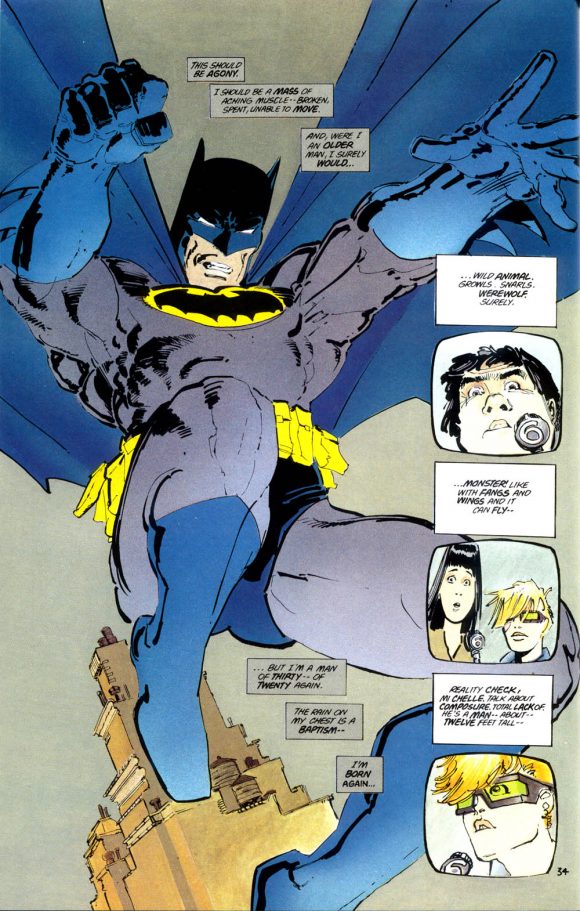
On 6/15, The Dark Knight Returns: The Last Crusade hits shops — and will tell the story of how the Joker killed Jason Todd in this universe. Jason’s death, of course, led to Batman’s retirement, which led to his inevitable return in the 1986 classic.
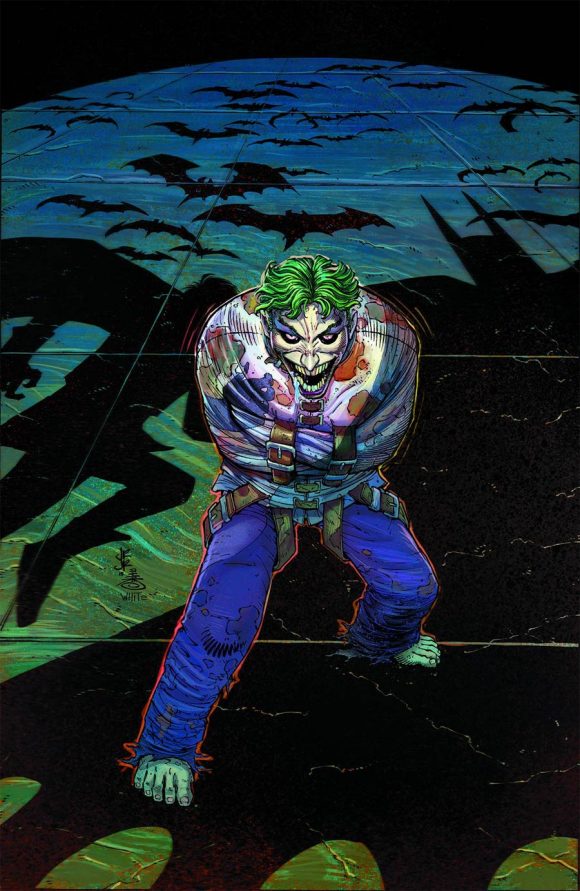
John Romita Jr. cover promo
(I’m sure a lot of people voted to kill off Jason in DC’s infamous phone poll a couple of years later because they wanted DC present to merge with DC future.)
While I’m not entirely certain that this is a story that needed to be told, I’m understandably curious nonetheless, especially since I’ve liked the slow-to-publish Dark Knight III. Miller is joined by DKIII co-writer Brian Azzarello and the art is by John Romita Jr. and Bill Sienkiewicz. That’s an all-star line-up.
Janson? He’s not in this one, but he’s been working on the DKIII project with penciller Andy Kubert.
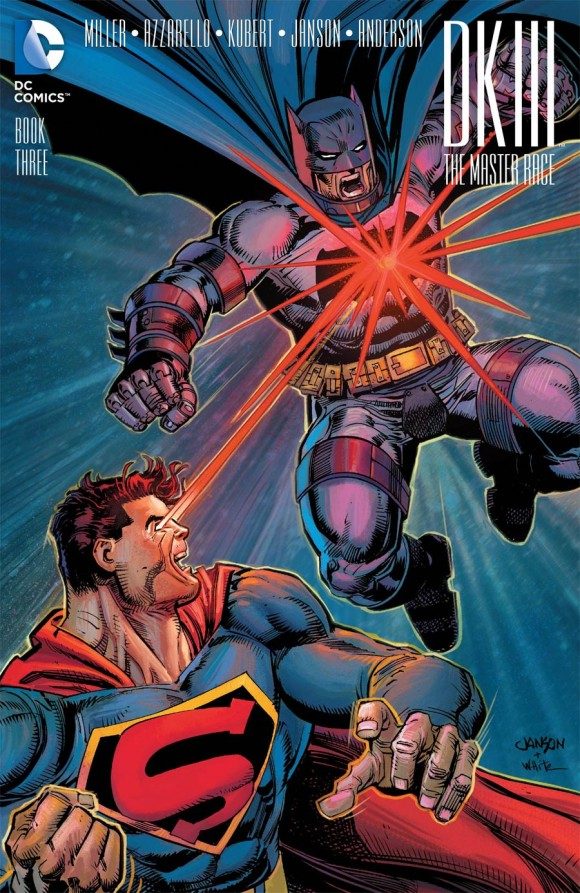
Janson’s Issue #3 variant
Miller and Janson have in their own ways influenced a generation-plus of creators over the last 30-35 years or so.
I had a chance to talk to them together recently, but rather than go over so much of the same ground they usually do, I asked them to talk about the things they never get to discuss publicly:
—
Klaus Janson: You know, the thing that I never get a chance to talk about are the people that came before me. My influences and the people that inspired me. The people that I stole stuff from in terms of art. Steve Ditko, Wally Wood, Neal Adams, Harvey Kurtzman, Will Eisner, all the greats. Alex Raymond, Burne Hogarth, Hal Foster.
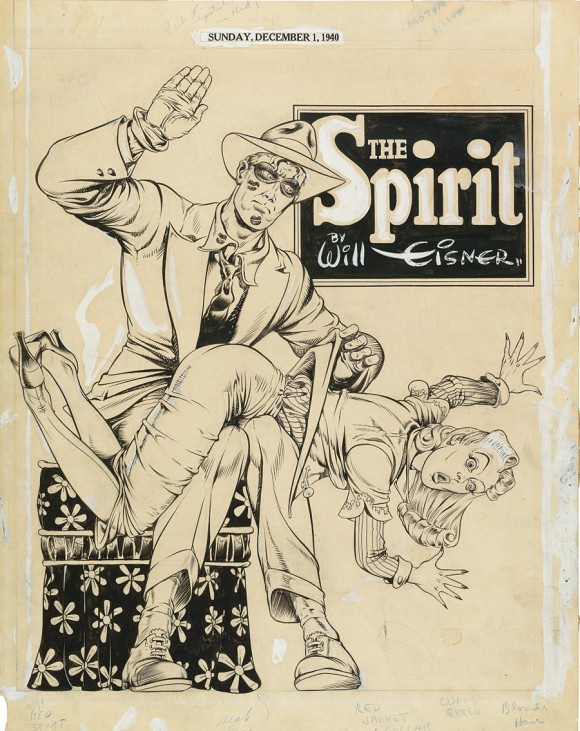
From Paul Levitz’s Will Eisner: Champion of the Graphic Novel
Frank Miller: The pantheon.
Klaus: Yeah! Absolutely.
Frank: We worship those guys.
Klaus: Yeah, and I think that not enough attention is paid to those who’ve come before. We’re so wrapped up in the politics of today. You know, what’s happening at the moment. And I think it’s a good thing to try and educate the generation that’s coming up now. It isn’t just about… Listen, I love Stuart Immonen. I think he’s amazing! You can look at Stuart Immonen and you can see where he’s coming from. I generally like to pay due to the people that influenced me.
Dan: I personally am a Silver Age and a Bronze Age fanatic. That has a lot to do with my own age.
Frank: Sure. Yeah.
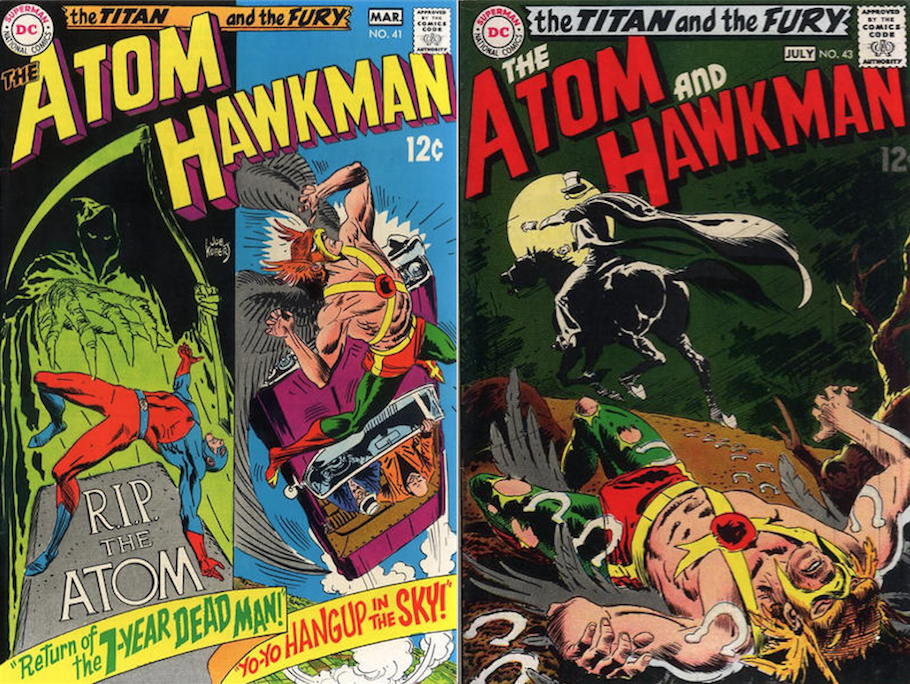
Kubert on their minds: Janson had a letter printed in Issue #43 (right), which referenced Issue #41 (left).
Dan: It’s funny because I recently was looking through an old Atom and Hawkman comic and I saw a letter from you, Klaus, in there and that kind of made me laugh!
Klaus: (Laughing) I’m sure it did!

Young Klaus, already thinking about inking …
Dan: How often do you go back and look at some of the early comics?
Klaus: Actually, a lot. I would say once a day.
Dan: Really? What are you reading right now?
Klaus: Abraham Stone by (Joe Kubert). Which I think is just absolutely phenomenal! I’m either inspired or I wanna blow my brains out! It’s one or the other. (All laugh)
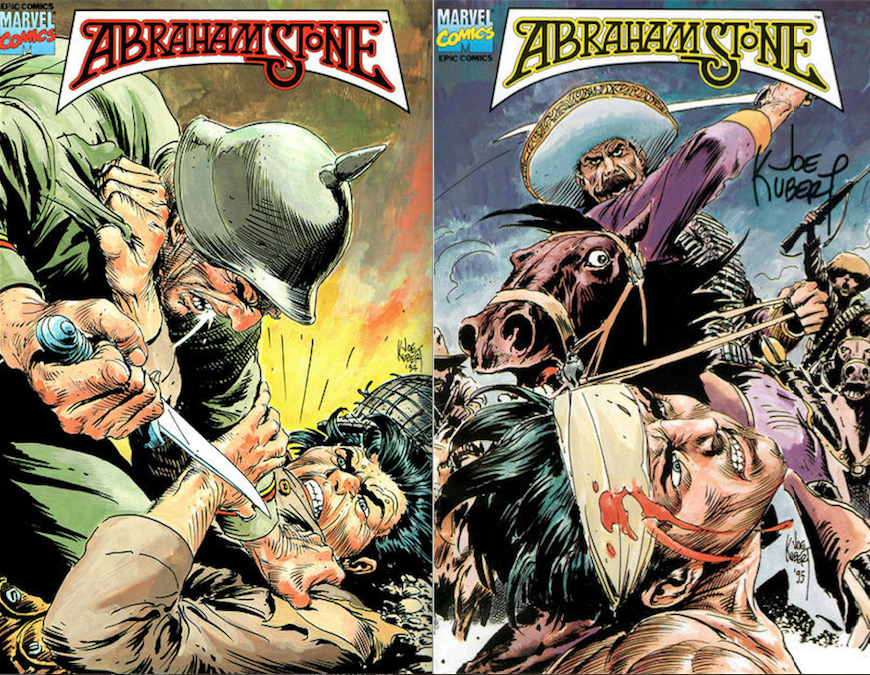
Frank: Oh, yeah. With me it’s Enemy Ace. That absolutely kills me!
Klaus: Yeah, it’s phenomenally brilliant! You look at it and think how could anybody possibly be better that this?
Frank: (Laughs) I think that’s close to the truth!
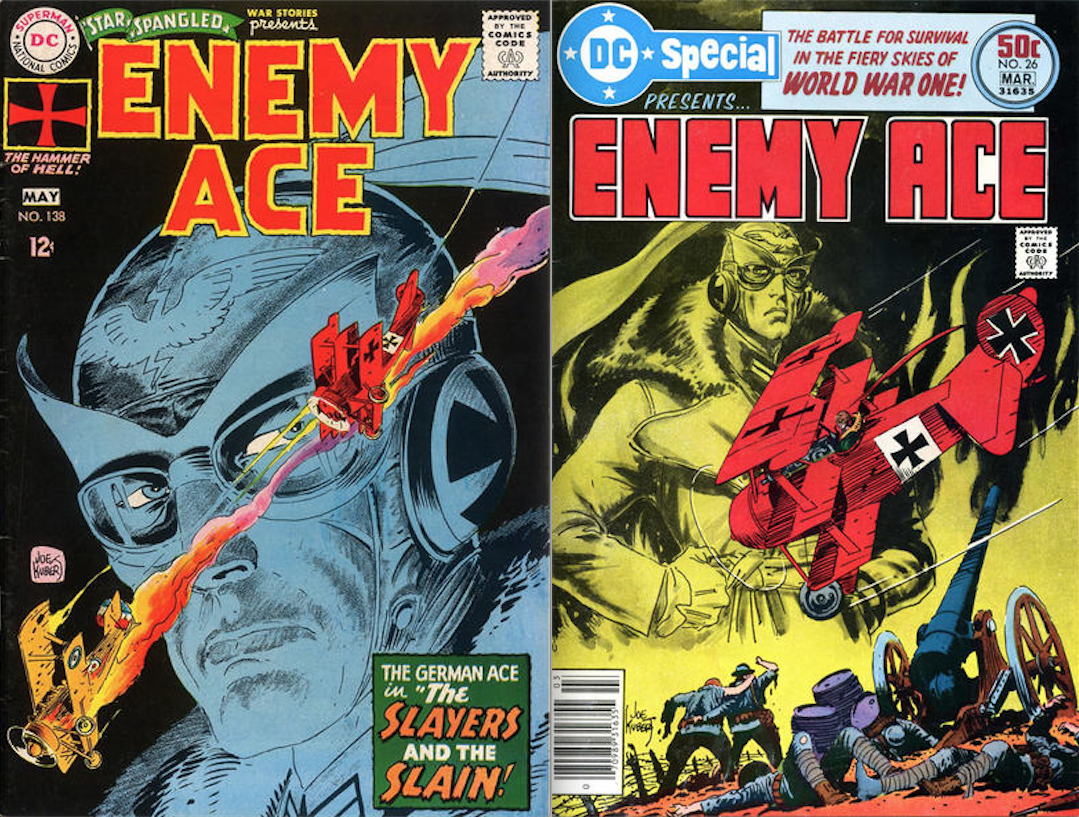
Dan: What are some of your favorite stories that you go back to time and again?
Frank: Again, Enemy Ace in particular and that was partly because of the art. … Let’s put it bluntly. Comic books have always been very well drawn. They’ve only recently been very well written. The writing in comics history goes from bad to execrable. With occasional glimmers of good writing here and there. But when Alan Moore came along, he came as a shock to the system. There was actually somebody who could write comics! There were occasions where people did both jobs and because they did both jobs they understood that good writing wasn’t necessarily burying the poor reader in words. It was using the two together as a maze.
Will Eisner once said to me that he believed that writers and artists made the best team when they shared the same body.
Dan: Have you seen the new Eisner book by Paul Levitz?
Klaus: I was just impressed at how well researched and well documented the book was. There’s stuff in there that I’d never seen. Ever. It was amazing.
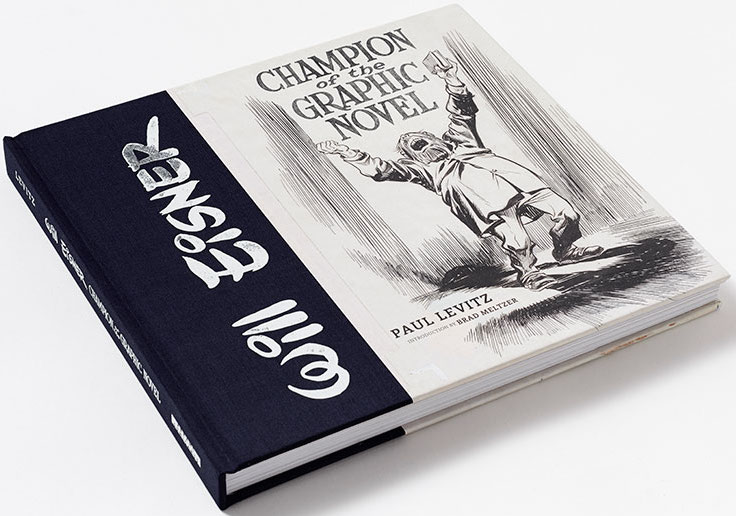
Dan: What I really liked was that it was partially an “artist’s edition,” using the original pages and some of the original splash pages. They stop me cold.
Klaus: Yeah.
Dan: Klaus, I’m always interested in the role of the inker…
Klaus: That makes ONE of you, by the way! (Dan and Klaus laugh)
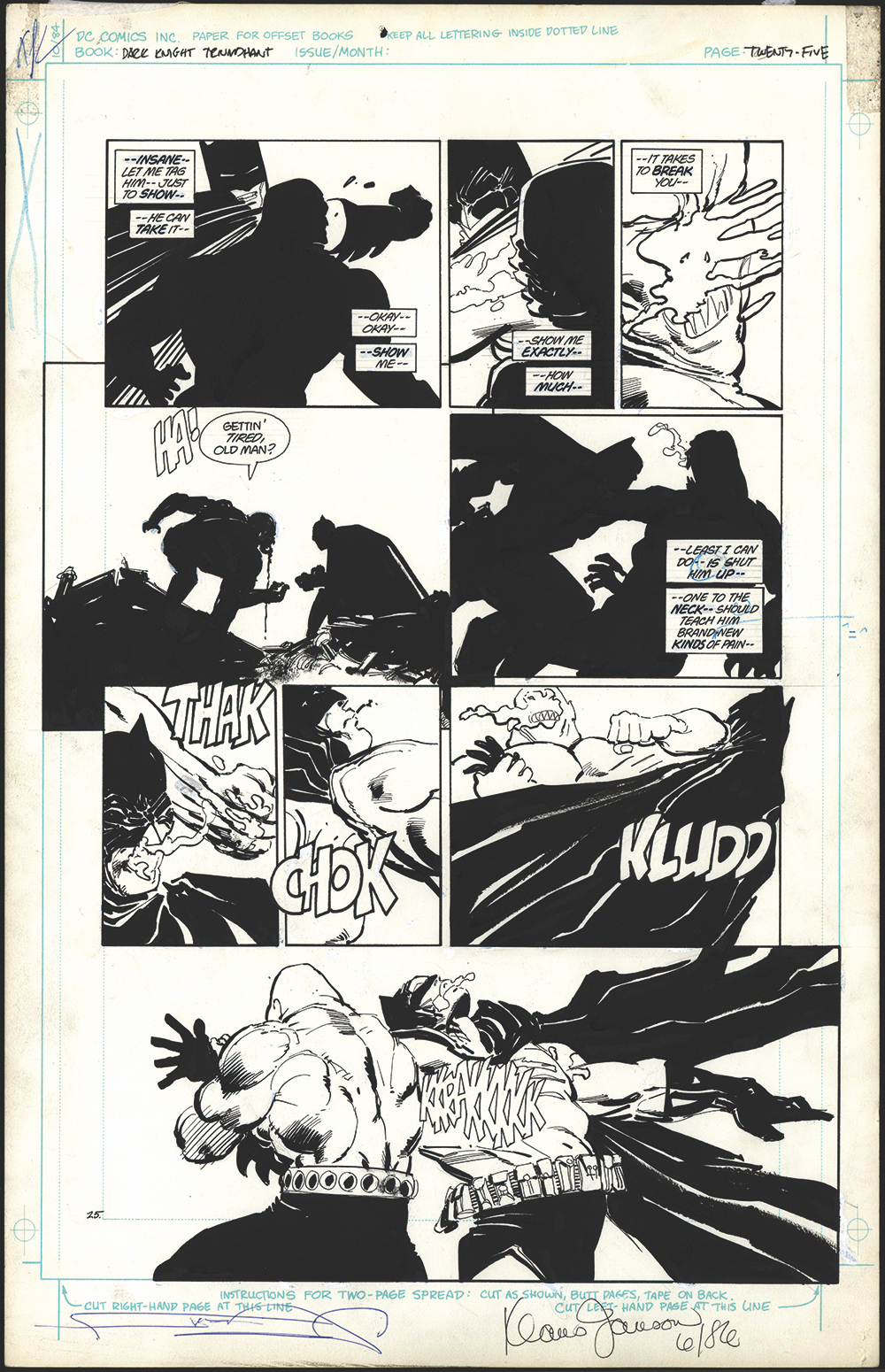
From The Dark Knight Returns Gallery Edition (Graphitti Designs)
Dan: As an inker, tell me how much you bring to it versus how much you have to sublimate your own impulses. … What do you think of yourself in your role as an inker and also the influence you’ve had on others?
Klaus: I appreciate the opportunity (to address this) actually. There are some pencillers that require a heavy footprint. And then there are some pencillers that don’t. I think part of being an efficient, good inker is knowing the difference between the two. In the case of someone like Andy (Kubert), I don’t need to do a heavy footprint, you know? I can contribute where I can but mostly get out of the way and, you know, let what Andy did shine through. And hopefully I’m able to do that and not get in the way.
But in terms of sublimating my own style, that is definitely true. I consider that to be part of my responsibility. One of the ways I think I’ve been able to maintain a level of creativity or survive at this point—because I’m like a 140 at this point—is to have, if I may say, a little bit of wisdom about how to approach my career. And I always try to have three separate, different projects on my desk. One where I sublimate, one where I don’t, and a penciling job. So I’m always penciling something, I’m always inking something. It may be for rent money …
Dan: You’re like an actor.
Klaus: Yeah, that’s right! That’s a good analogy. And then another penciling/inking job where I can be myself and do what it is that I wanna do. I’ve found that to be necessary for my own mental health and I think it’s also helped me maintain a career that has some legs to it.
Frank: Working with Klaus taught me a LOT about inking. He taught me hands on, but he taught me by example, and it’s sort of like working with other writers telling me a lot about writing. And I’ve seen Klaus expanding his art as he’s moved into doing the whole show himself. So we’re all here to kind of, like, help each other out that way. It’s very much like a… well, we’re like a secret society.
—
ALSO ON THE BATSHELVES THIS WEEK
— Speaking of Miller and Janson, check out the 13 DAYS OF THE DARK KNIGHT RETURNS GALLERY EDITION Index, your gateway to incredible original art, as seen above.
— I think only Miller and Janson (or Neal Adams and Denny O’Neil) could upstage Batman #1, which follows its Rebirth issue from a couple weeks ago. Tom King flies solo as writer, with art by David Finch and Matt Banning. Look for a review on Wednesday.
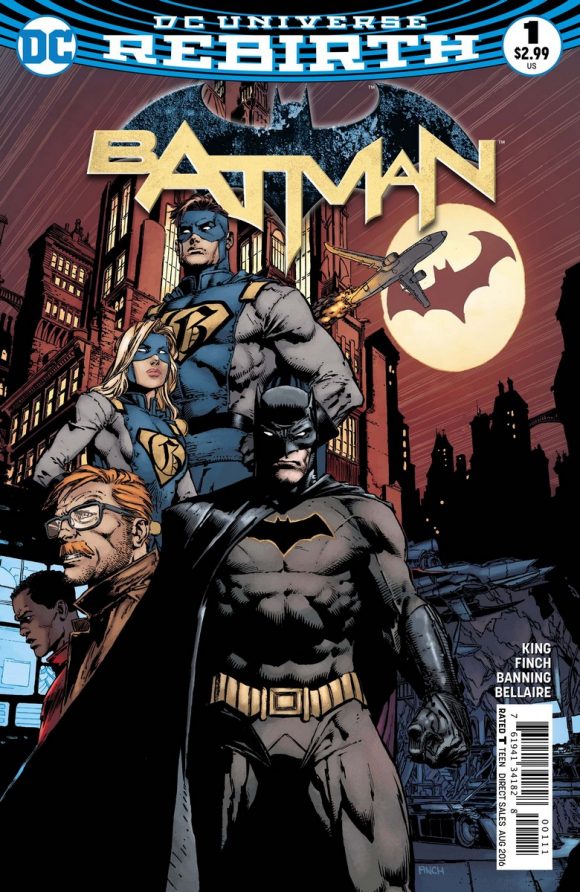
— Titans: Rebirth #1. The focus is on the original Wally West’s return but I always consider Titans books to be Batbooks because it’s always Robin’s or Nightwing’s team, y’know?
— Dark Night: A True Batman Story is released this week under the Vertigo imprint. It’s Paul Dini’s memoir of surviving a violent assault — and how writing Batman: The Animated Series helped him recover. Art is by Eduardo Risso.
— Poison Ivy: Cycle of Life and Death #6, by Amy Chu and Clay Mann, wraps up the entertaining miniseries.
